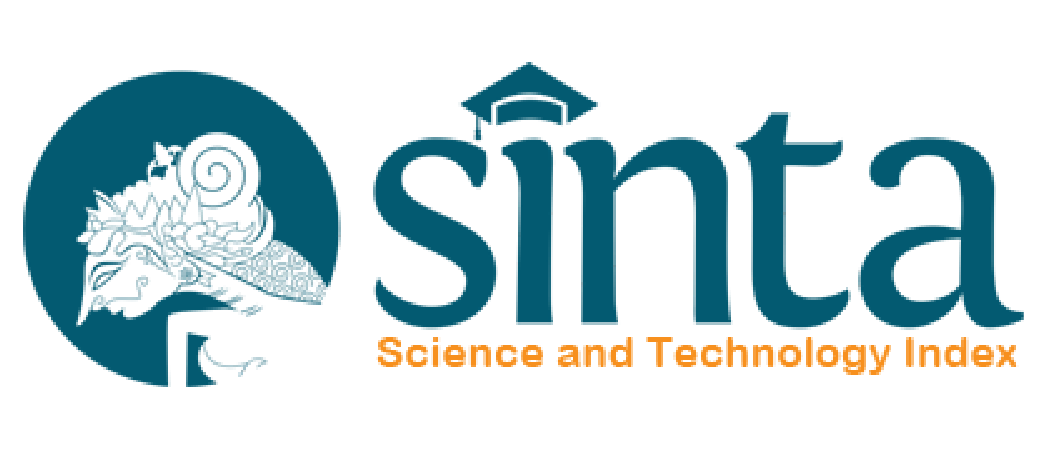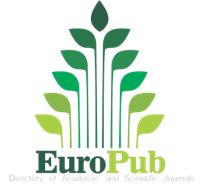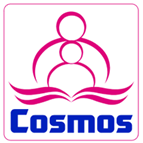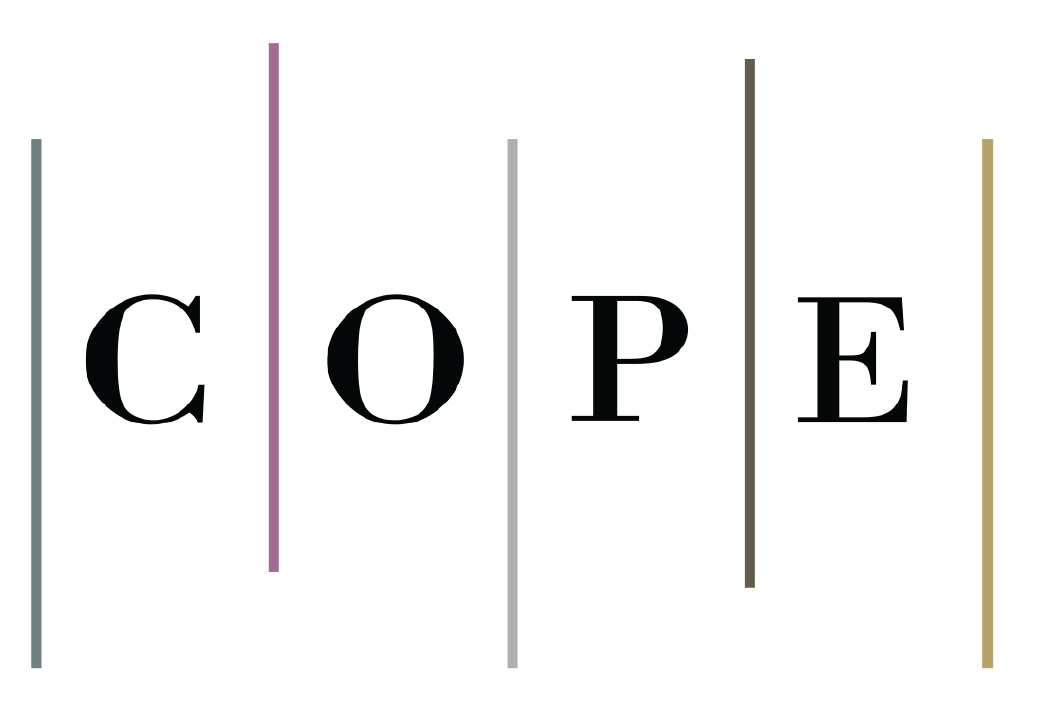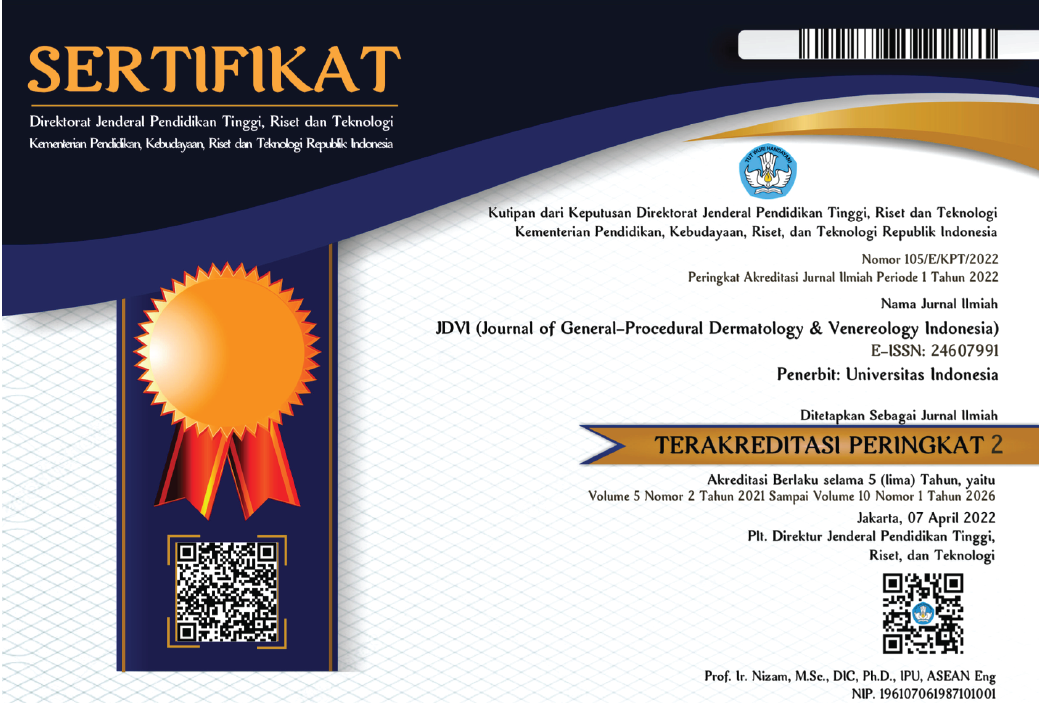Abstract
Background: Chromoblastomycosis (CBM) is a rare, chronic granulomatous and suppurative skin infection classified as a subcutaneous mycosis. CBM has a poor prognosis with a low cure rate and a high recurrence rate. The lack of scientific data regarding the diagnosis and treatment of CBM also presents a challenge for clinicians in treating this disease. Appropriate therapy can increase the cure rate and prevent disease recurrence.
Case Illustration: A 66-year-old woman presented with swelling in her left arm since the last 18 years due to wood-related injuries. There were multiple well-defined hyperkeratotic verrucous plaques, papules, and nodules, measuring 6-10 cm in diameter on the left antebrachial and hand regions. Some lesions were covered with erosion and crusts. The patient also had bone malformation. Histopathological examination showed typical characteristics of CBM. The patient was treated with 100 mg Itraconazole b.i.d. for 8 months.
Discussion: Clinical manifestations and histopathological examination showed typical characteristics of CBM. Bone malformation occurred due to complications in chronic cases. Facility limitations led to the inability to perform direct microscopic examination using potassium hydroxide (KOH) and fungal culture on Sabouraud's dextrose agar. After 8 weeks of treatment, the patient's lesions were improved. The patient will be evaluated every month until treatment is complete to monitor the side effects of therapy.
Conclusion: CBM lesions were improved after 8 weeks of treatment. Bone malformation could occur in chronic cases. It is important to diagnose CBM correctly and provide adequate therapy for a good outcome.
References
1. Passero LFD, Cavallone IN, Belda W. Reviewing the etiologic agents, microbe-host relationship, immune response, diagnosis, and treatment in chromoblastomycosis. Vol. 2021, Journal of Immunology Research. Hindawi Limited; 2021.
2. Hay RJ. Deep Fungal Infection. In: Wolff K, Goldsmith LA, Katz SI, Gilchrest BA, Paller SA, editors. Fitzpatrick’s Dermatology in General Medicine. 9th ed. New York: McGraw Hill; 2019. p. 2971–2.
3. Andrade TS, Almeida AM, Basano SA, et al. Chromoblastomycosis in the Amazon Region, Brazil, caused by Fonsecaea Pedrosoi, Fonsecaea nubica, and Rhinocladiella Similis: Clinicopathology, susceptibility, and Molecular Identifification. Med Mycol. 2020;172–80.
4. Queiroz-Telles F, de Hoog S, Santos DWCL, Salgado CG, Vicente VA, Bonifaz A, et al. Chromoblastomycosis. Clin Microbiol Rev. 2017 Jan 1;30(1):233–76.
5. Hay RJ, Ashbee HR. Mycology. In: Burns T, Breathnach S, Cox N, Griffiths C, editors. Rook’s Textbook of Dermatology. 9th ed. United Kingdom: Blackwell Publishing; 2016. p. 32.76-8.
6. Elewski BE, Hughey LC, Hunt KM, Hay RJ. Fungal Disease. In: Bolognia JL, Schaffer JV, Cerroni L, editors. Dermatology. 4th ed. Spanyol: Mosby; 2018. p. 1347–8.
7. Borges JR, Ximenes BÁS, Miranda FTG, Peres GBM, Hayasaki IT, Ferro LC de C, et al. Accuracy of direct examination and culture as compared to the anatomopathological examination for the diagnosis of chromoblastomycosis: a systematic review. An Bras Dermatol. 2022 Jul 1;97(4):424–34.
8. Sousa GSM, De Oliveira RS, De Souza AB, Monteiro RC, Santo EPTE, Franco Filho LC, et al. Identification of Chromoblastomycosis and Phaeohyphomycosis Agents through ITS-RFLP. Journal of Fungi. 2024 Feb 1;10(2).
9. Khadka DK, Pandey D, Agrawal S. Combination Treatment for Extensive Chromoblastomycosis: A Case Report. Nepal Journal of Dermatology, Venereology & Leprology. 2021 Oct 4;19(2):58–61.
10. Purim KSM, Peretti MC, Neto JF, Olandoski M. Chromoblastomycosis: Tissue modifications during itraconazole treatment. An Bras Dermatol. 2017 Jul 1;92(4):478–83.
11. Shenoy MM, Girisha BS, Krishna S. Chromoblastomycosis: A case series and literature review. Indian Dermatol Online J. 2023 Sep 1;14(5):665–9.
12. Agarwal R, Singh G, Ghosh A, Verma KK, Pandey M, Xess I. Chromoblastomycosis in India: Review of 169 cases. Vol. 11, PLoS Neglected Tropical Diseases. Public Library of Science; 2017.
13. Liu H, Sun J, Li M, Cai W, Chen Y, Liu Y, et al. Molecular Characteristics of Regional Chromoblastomycosis in Guangdong, China: Epidemiological, Clinical, Antifungal Susceptibility, and Serum Cytokine Profiles of 45 Cases. Front Cell Infect Microbiol. 2022 Feb 18;12.
14. James WD, Berger TG, Elston DM. 12. Diseases Resulting From Fungi and Yeasts. In: James WD, Berger TG, Elston DM, editors. Andrews’ disease of the skin. 12th ed. Philadelphia: Elsevier; 2016. p. 310–1.
15. Santos DWCL, de Azevedo C de MP e. S, Vicente VA, Queiroz-Telles F, Rodrigues AM, de Hoog GS, et al. The global burden of chromoblastomycosis. PLoS Negl Trop Dis. 2021 Aug 1;15(8).
16. Yahya S, Widaty S, Miranda E, Bramono K, Islami AW. Subcutaneous mycosis at the Department of Dermatology and Venereology dr. Cipto Mangunkusumo National Hospital, Jakarta, 1989-2013. Journal of General-Procedural Dermatology & Venereology Indonesia. 2016 Jun 30;1(2):36–43.
17. Zheng L, Ran X, Dai Y, et al. Elbow Malformation with Osteoaarthritis and Bone Destruction Caused by Chromoblastomycosis. Mycopathologia. 2019;459–60.
18. Srivinas SM, Gowda VK, Mahantesh S, Mannapur R, Shivappa SK. Chromoblastomycosis Associated with Bone and Central Nervous Involvement System in an Immunocompetent Child Caused by Exophiala Spinifera. Indian J Dermatol. 2016;324–8.
Recommended Citation
Earlia, Nanda; Maulida, Mimi; Handriani, Risna; Kamarlis, Reno Keumalazia; and Pradistha, Aldilla
(2024)
"Chronic cutaneous chromoblastomycosis: A rare case,"
Journal of General - Procedural Dermatology and Venereology Indonesia: Vol. 8:
Iss.
1, Article 8.
DOI: 10.7454/jdvi.v8i1.1183
Available at:
https://scholarhub.ui.ac.id/jdvi/vol8/iss1/8
Included in
Dermatology Commons, Integumentary System Commons, Skin and Connective Tissue Diseases Commons



